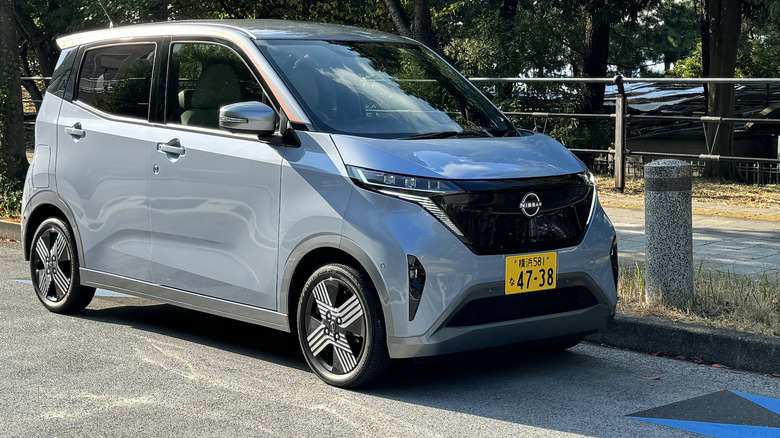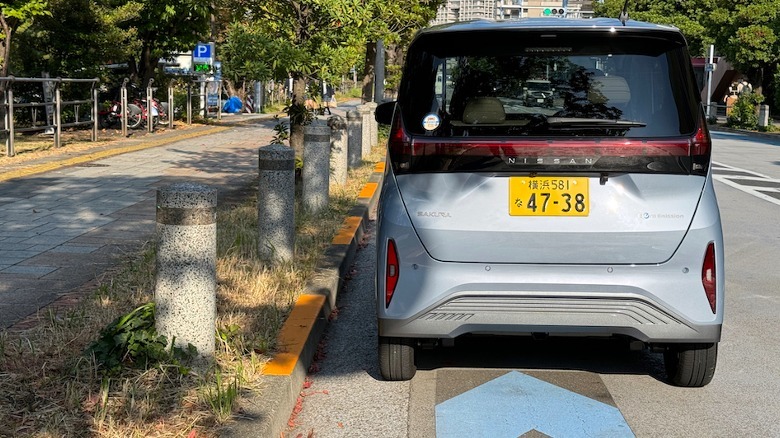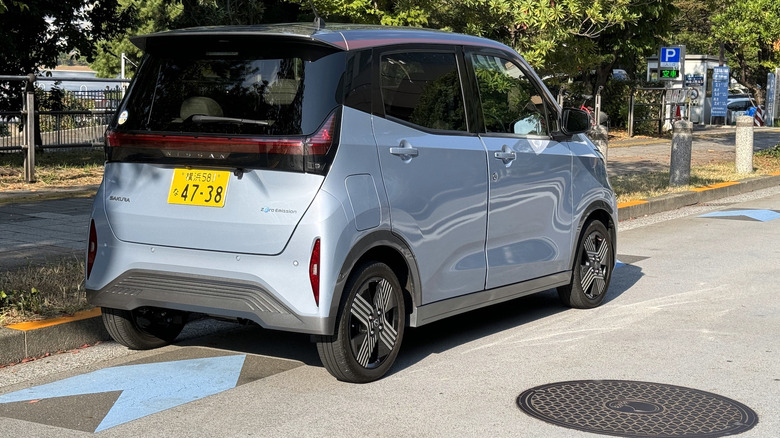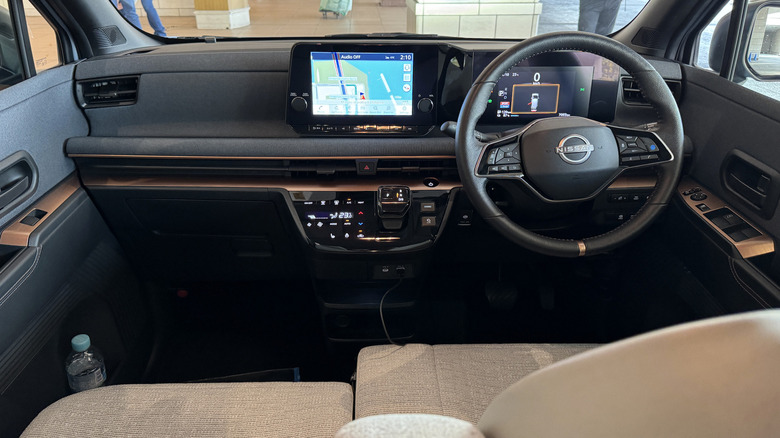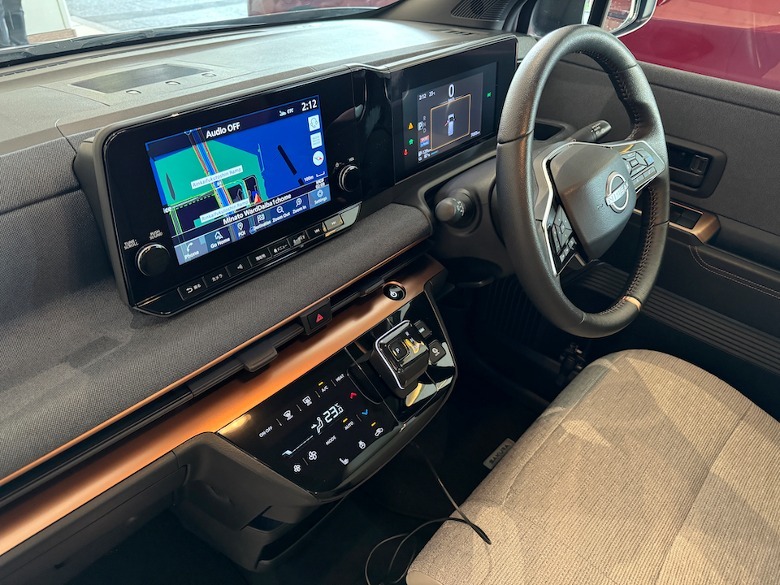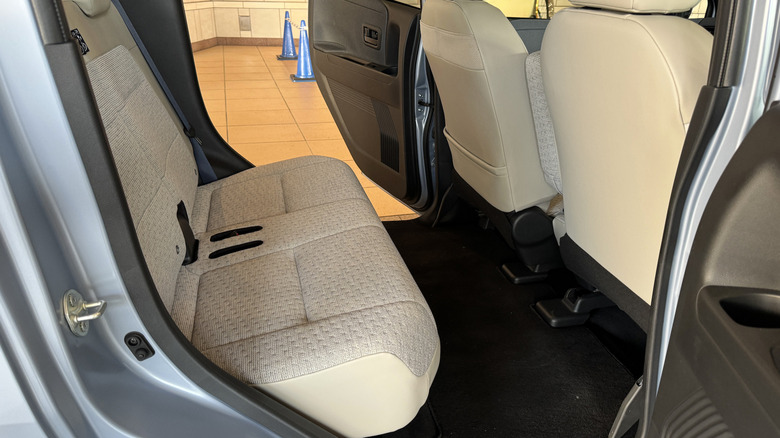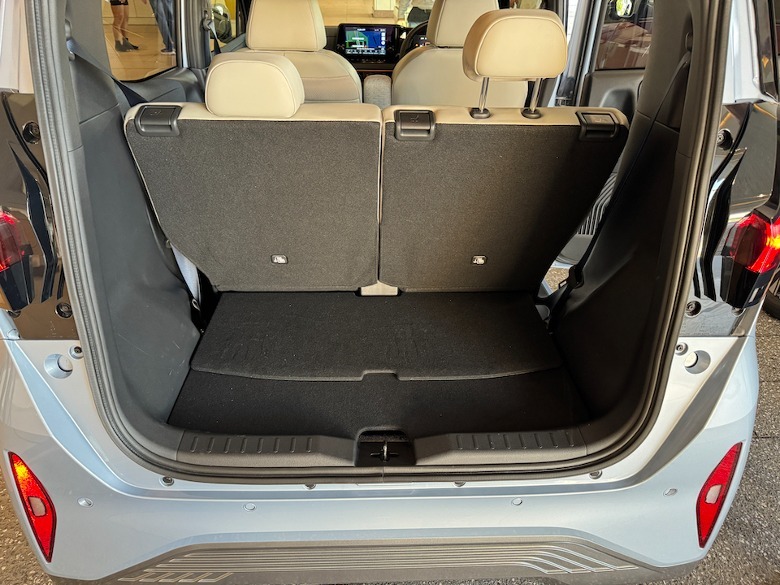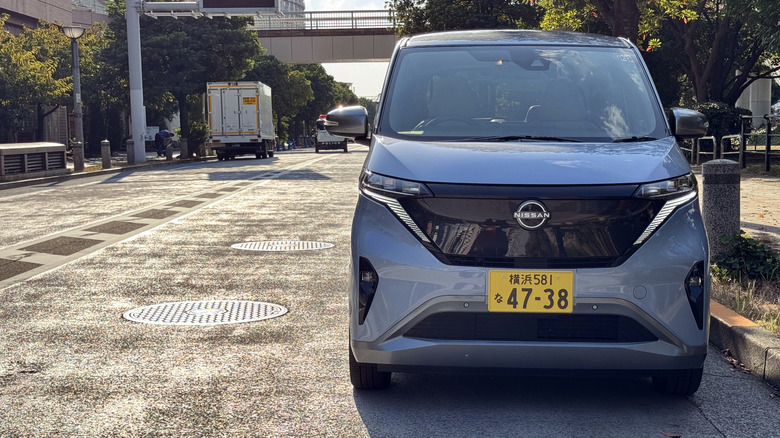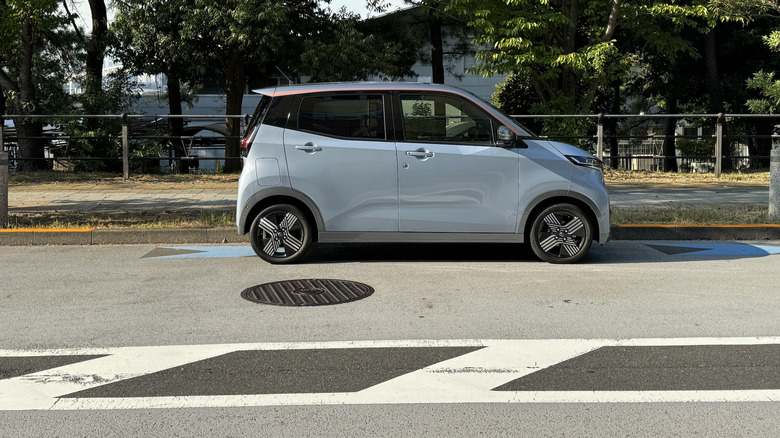I Drove Nissan's Weirdest EV: Here's Why It's No Gimmick
The Nissan Sakura may look like a toy, but the diminutive EV is a bigger deal than the dimensions would suggest. Currently only available in Japan, Nissan's smallest electric car doesn't have the biggest range of an EV on the market, nor the spine-bruising acceleration, or the most gadgets in the cabin. Then again, perhaps that's expecting too much from a cabin you can reach both sides of without really stretching.
It's a thoroughly modern interpretation of the Kei car, the smallest highway-legal vehicle that has become synonymous with the streets of Tokyo and other dense Japanese cities. You don't just have to be small to qualify as a Kei, though. Regulations around power output also generally leave them fairly unenthusiastic from behind the wheel.
The Sakura, though, has electrification in its favor. Rather than a tiny, breathless gas engine, it offers a taste of the instant electric torque we've rapidly come to appreciate from EVs. So, when Nissan invited the press to Japan for the auto show and tossed me the keys, it seemed rude not to let the Sakura show off its party tricks.
A modern-day Kei car with an electric advantage
Kei cars — also known as K-cars, or mini-vehicles — began back in the post-war days, when regular cars were out of financial reach for most Japanese people. Small, affordable models aimed to coax them off cheap motorcycles and into something with more seats and more flexibility, and indeed you could argue that the Sakura's most obvious competition is an electric scooter.
Nobody is going to accuse the Sakura of being a range monster. Nissan says drivers can expect around 180 kilometers — or approximately 111 miles — from a full charge, using the Japanese WLTC test cycle. Not bad at all, though, given that's from a mere 20 kWh battery.
The small pack has another useful benefit: charging flexibility. While a fast charger can take the Sakura from zero to 80% in about 40 minutes, it's no great hardship to plug it into a regular outlet. Such a connection may only provide 100V, but given the battery size and the relatively low expectations for driving distance among Sakura owners, it should mean an 8-hour overnight top-up will get you fully charged (and without the need to install a Level 2 home charger).
More eager than the specs might suggest
On the road, "perky" describes the Sakura experience well. With 63 horsepower it's far from the most potent EV we've seen; even the cheapest Nissan Leaf in the US offers 147 hp. Top speed is limited to around 80 mph.
Actually driving the Sakura belies the on-paper specs, however. With a curb weight under 2,400 pounds and 144 lb-ft of torque on tap, the single electric motor driving the front wheels sends the Kei car surging forward like a miniature bullet train. It's more than nimble enough to dart through the urban traffic Nissan had in mind for its usual stomping grounds, and there's a pleasing directness to the steering — even if you probably wouldn't want to push too hard in the corners given the skinny little tires.
As with the 2023 Ariya, there's an optional Sport mode, along with a choice of regenerative braking levels down to one-pedal mode. A tiny turning circle of less than 16 feet, meanwhile, makes backtracking down confusing Tokyo streets a single maneuver, and Nissan even offers ProPILOT Park for parking assistance. Not that reverse parking in something this dinky provokes the usual levels of anxiety.
Nissan's own little TARDIS
The most striking part of the Sakura experience, though, has to be the cabin. More specifically, just how much Nissan squeezes inside its 134 x 58-inch footprint. While you might suspect, from the outside at least, that there'd be room for two in tandem style, in fact, there's seating for four.
Though it resembles a bench, the front seats are split and can slide independently: It means there's no jostling for arm room, even with two adults sitting abreast. The rear feels even more capacious. With the bench pushed all the way back, there's frankly ridiculous levels of legroom, while the Nissan's 65-inch height means headroom isn't an issue either. At 5'8 that's not usually an issue for me generally, but even 6+ foot people had room to spare back there.
The trunk is — at around 3.7 cu-ft — not going to make the Sakura a pickup replacement. Still, there's more than sufficient for a weekly grocery shop, especially since you can slide the rear bench forward and back from the trunk easily, and flatten the seat-backs down. An under-trunk space holds the charging cable and other accessories.
It's a real car, just smaller
With a base price of 2,333,100 yen, or around $15,600, you might expect the Sakura to feel, well, tinny and cheap. There's certainly not as much sound deadening as other cars might get, at least to my ears, but generally, it's no floppy golf cart. Familiar dashboard technology and trim from other Nissan models help keep things feeling grown-up, too. It's certainly far from spartan, despite the price.
Even when parked up, the Sakura is impressive. It can act as a battery to power a home during an outage, with enough juice to keep the average Japanese household running for a full day, Nissan estimates. Considering a single Tesla Powerwall 2 (with 13.5 kWh) is currently around $8,400 in the U.S. (pre-incentives and not including installation), that leaves Nissan's EV looking surprisingly competitive given it's also a car as well as a backup battery.
Maybe unsurprisingly, then, Sakura has been hugely successful for Nissan in Japan. The automaker sold almost 22,000 of the EVs during 2022, even though the car wasn't on sale for the full year. Zipping through Tokyo, it's hard not to be charmed by the electric experience: I definitely found myself wishing Nissan would bring some Sakura-style whimsy to the U.S. market, too.
No toy, but no U.S. plans either
The reality is, of course, that American drivers have very different expectations from their Japanese counterparts. It's not clear whether they'd be willing to pay $16k for what amounts to a city car: even if the Sakura was keeping up with highway traffic, the idea of looking out of the window and seeing pickups and SUVs towering over it is sufficient to make you shudder. Then again, plenty of people drive Smart cars in the U.S., and it's not like they're all that different in scale from Sakura.
What this diminutive Nissan demonstrates, though, is that there's more than one route to electrification, especially if you're willing to think outside of the usual categories. What may truly enable that is All-Solid-State Battery (ASSB) technology, which Nissan is counting on to be cheaper as well as offering roughly twice the power density as current li-ion cells. A Sakura-style EV with 220+ miles of range, even faster charging, and a potentially lower sticker price is something I think even American drivers could rightly feel envious of.
